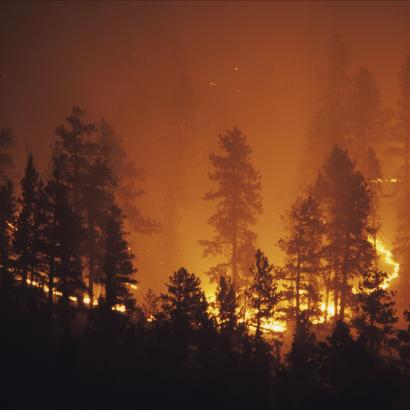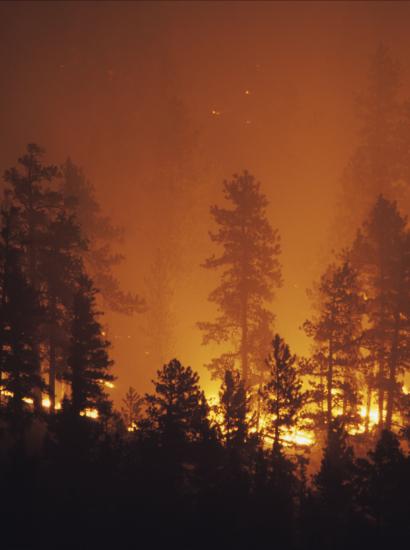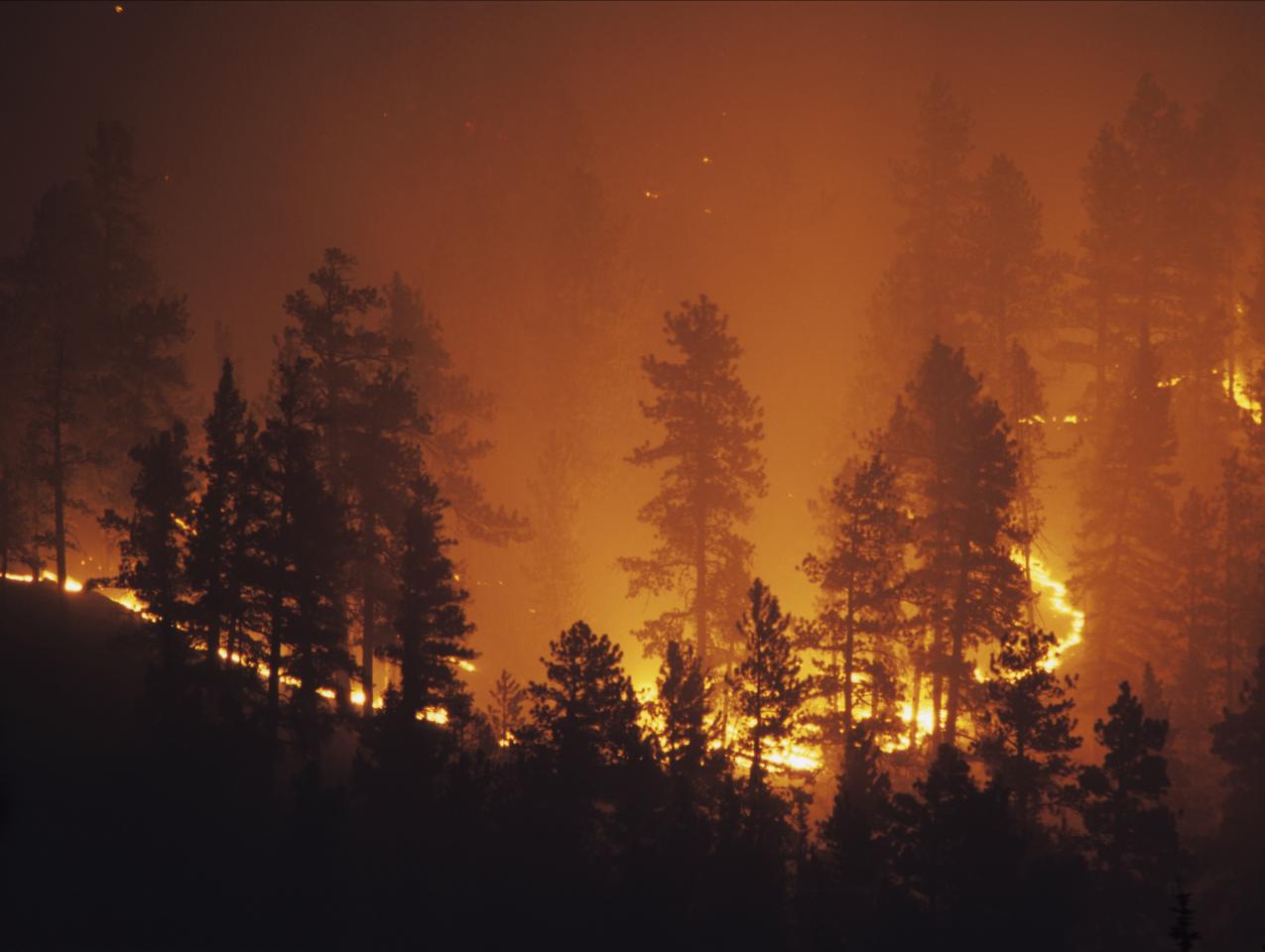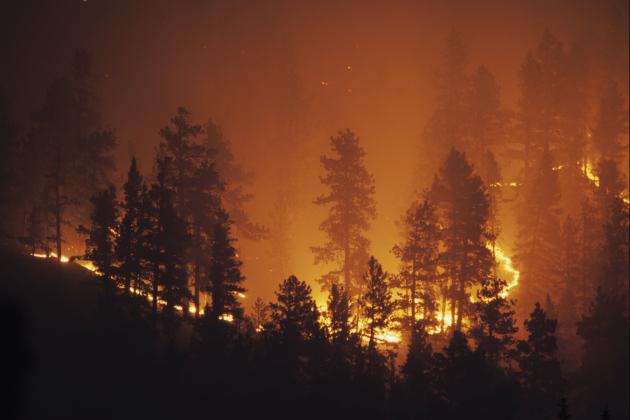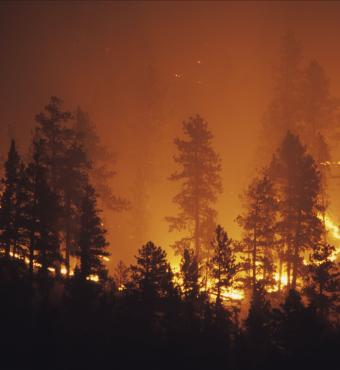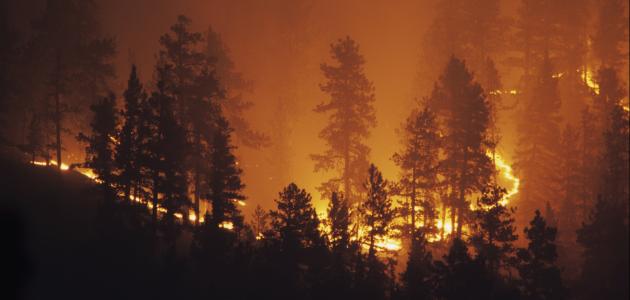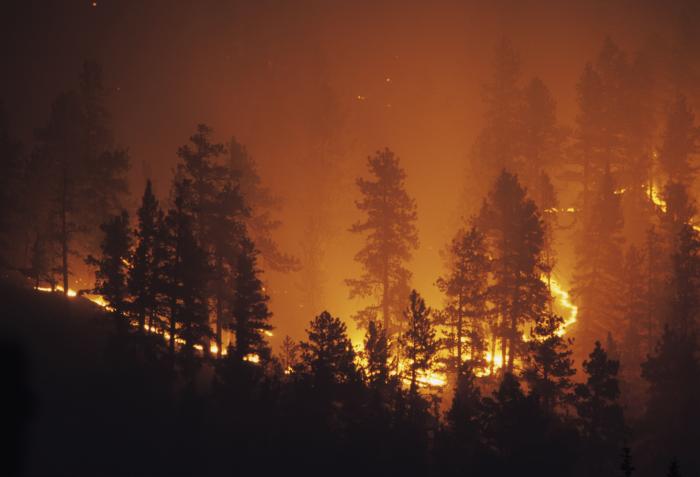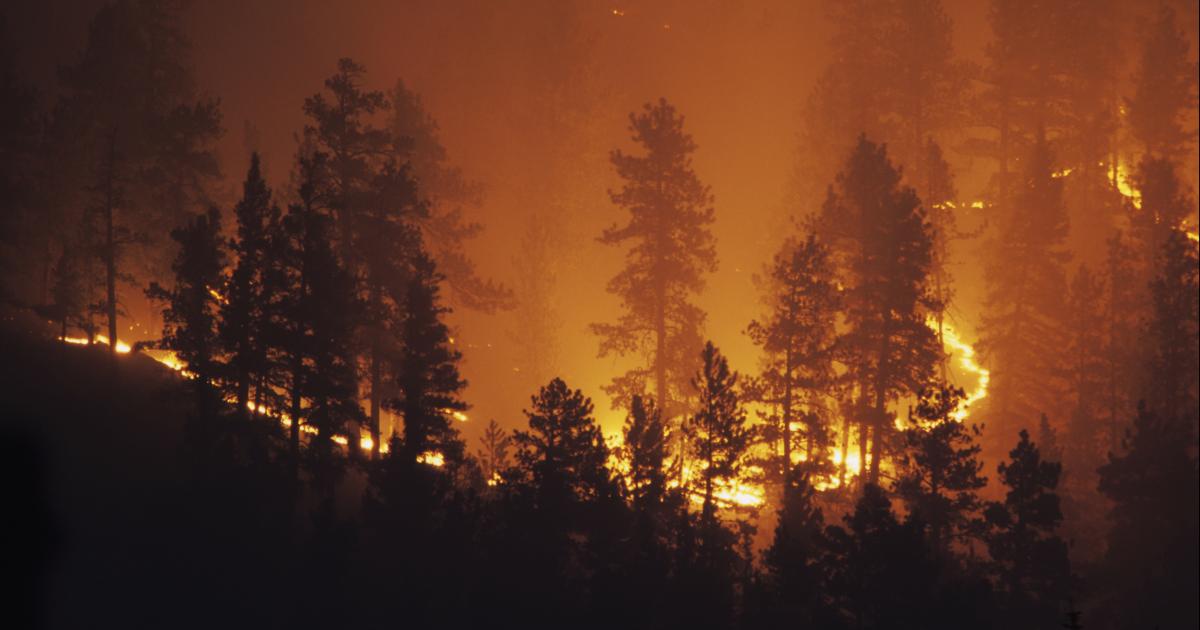Over the past several weeks, California has been gripped by two of the most deadly forest fires in its history: the Camp Fire north of Sacramento and the Woolsey Fire in Ventura and Los Angeles counties. At last count, the toll of this disaster includes 76 dead and hundreds missing, the destruction of nearly 10,000 homes, and unhealthy air quality—now called the “dirtiest in the world”—throughout the San Francisco Bay Area, leading to the postponement of many local events, including moving the “Big Game” between Cal and Stanford from November 17 to December 1.
An enormous debate has developed over the cause of both fires. Outgoing California Governor Jerry Brown has loudly proclaimed that climate change deniers are “definitely contributing” to the onslaught of new fires. But the best evidence says otherwise. Global temperature increase has been nil over the last 20 or so years, notwithstanding the increased levels of carbon dioxide in the atmosphere. Similarly, the repeated claims that we have had more unstable global climate patterns within that period is likewise false. According to Professor David B. South of Auburn University, “data suggest that extremely large megafires were four-times more common before 1940” than today, even though CO2 levels were lower.
Local variables have transformed California far more dramatically than climate change. Thanks to a large influx of new residents to California in recent years, new homes have been built close to the forests, as happened in the now torched town of Paradise, where the many new homes burnt to the ground were quite literally in harm’s way. On the forest floor, as explained in the Wall Street Journal, an accumulation of dead wood, coupled with too much new growth, stymied the efficient growth of healthy trees that are better able to resist fires.
Every bit as important is the major change in the philosophy of land use management. Much of the forest land in California is now owned by the state and federal government. These lands have proved far more vulnerable to forest fires than properties owned by private groups. Private lands are managed with the goals of conservation and production. The management of public lands has been buffeted by legislative schemes driven by strong ideological commitments. Writing last year, Republican Congressman Tom McClintock noted that his air inspections revealed a distressing pattern: “The [privately] managed forests are green, healthy and thriving. The neglected federal forests are densely overcrowded and often scarred by fire because we can’t even salvage the fire-killed timber while it still has value.”
But why? The answer hearkens back to the onset of the environmental movement in the late 1960s and early 1970s. Everyone at the time was rightly in agreement that something had to be done about the rising threats of air and water pollution. But the means chosen to exercise this vital missions resulted in the passage of federal and state statutes that quickly went badly awry. Two key federal statutes illustrate the dimensions of the basic problem—the National Environmental Policy Act (NEPA) of 1970 and the Endangered Species Act (ESA) of 1973. These statutes have overlapping purposes. NEPA has commonly been called a “procedural” statute whose main purpose is to “encourage productive and enjoyable harmony between man and his environment” by taking steps to “prevent or eliminate damage to the environment,” and “to use all practicable means” to achieve these efforts. NEPA required “all agencies of the Federal government” to prepare detailed Environmental Impact Statements to allow the discharge of that mission.
NEPA was originally conceived as a device to encourage collaboration among government officials and various public and private groups to achieve its ends. But in 1971, Judge J. Skelly Wright of the District of Columbia Circuit Court of Appeals added a new dimension to the equation in Calvert Cliffs’ Coordinating Committee v. United States Atomic Energy Commission, which held that, in light of NEPA’s strong environmental mission, any private party could bring an action in federal court to review any administrative approval of a proposed project. He then celebrated this development in no uncertain terms: “These cases are only the beginning of what promises to become a flood of new litigation—litigation seeking judicial assistance in protecting our natural environment.”
That judicial maneuver transformed the statute. Most parties did not want to sue to block projects. It was only the activist environmental groups with the strongest commitment that came forward. And when they did, there was no longer a collaborative process that involved parties on all parts of the political spectrum. Now the sole party before the court was the group most determined to see the project or activity stopped. On this score, delay was always on its side. The additional time could financially wipe out the private parties, whose projects were thrown into limbo. To make matters worse, the Supreme Court in the 1983 case, Motor Vehicle Manufacturers Association v. State Farm, insisted that in each case, the reviewing court must take a “hard look” at the proposed project to see that it conformed in every respect with the substantive law. In most cases, the consequence of any slip up—a few of which are highly likely in any comprehensive assessment—meant that the process had to be restarted with a supplemental environmental analysis. Sadly, the whole process was misguided insofar as it insisted that all negative aspects of a project had to be evaluated before any work on the project could be done. In so doing, environmental law departed from the far more sensible common law rules that awarded an injunction against certain activities only in the case of actual or imminent harm. This sound approach allowed for project defects to be repaired during the course of work, after all parties had acquired far greater knowledge of the source of environmental concerns and their possible remedies.
The aggressive reach of NEPA is compounded by the high-level ambitions of ESA, which requires all federal departments and agencies to “seek to conserve endangered and threatened species and . . . utilize their authorities in furtherance of the purposes of this Act,” often by the designation of “critical habitat.” Critical habitat designation creates a weak system of private property rights, and its validity as a matter of federal administrative law is now before the Supreme Court in Weyerhaeuser v. United States Fish and Wildlife Service.
The successful management of any complex environmental system requires complicated tradeoffs between various objectives like the preservation of diverse species, fire prevention, the construction of dams and waterways, and the harvesting of valuable timber. But any tempered approach of balancing costs and benefits of environmental regulations was effectively scuttled by the Supreme Court in Tennessee Valley Authority v. Hill (1978), which took the position that the recent discovery of a new endangered species, the snail darter, took priority over the completion of the Tellico dam, which was in the final stages of construction. The notion of tradeoffs was pushed emphatically to the back burner.
The combination of ESA and NEPA shifted the environmental movement in the wrong direction. One result was, as Congressman McClintock noted, an 80 percent reduction in the number of trees that were harvested and sold on public lands in California reducing the number of operating saw mills there from 149 in 1981 to 27 in 2017. The added layers of bureaucratic oversight introduced state and federal permit requirements before any new activity on land, such as logging, could begin. The upshot of this change was that management questions, especially on public lands, moved from managers on the ground who had local knowledge of the situation, to bureaucrats in distant places who lacked it. Those bureaucrats also tended to think in the same absolutist terms that informed the interpretation of both NEPA and ESA in the courts—that is, preserving the environment was the foremost goal no matter how strong the competing interests. So began the restraint on the cutting of trees and the clearing of deadwood and underbrush. At no point was the process guided by the insight that prophylactic measures today might prevent greater environmental destruction tomorrow. So, by preventing, for example, strategic burns that might protect vulnerable sites, environmental policies created a situation in which minor events, such as a spark from a power line or a stray cigarette butt, could cause disasters in the form of large-scale loss of life and destruction of property coupled with thick blankets of pollution that spread for miles.
It is an odd way of calculating priorities. California and the federal government take immense steps to stop, for example, tailpipe emissions, which at their worst did not cause a fraction of the pollution that the forest fires are now creating throughout the state. The overdue decision to rethink the logging policies in state and national forests is a welcome first step. But it is only a first step. Statutes like NEPA and ESA are filled with procedural and substantive mistakes that have to be rethought from the ground up, with a suitable dose of modesty. Go after pollution; introduce sound management policies; pay for the condemnation of critical habitat; don’t fret about global warming. Focused, well-balanced policies are the effective antidote to the grandiose, but misguided, environmental polices of 50 years ago.








